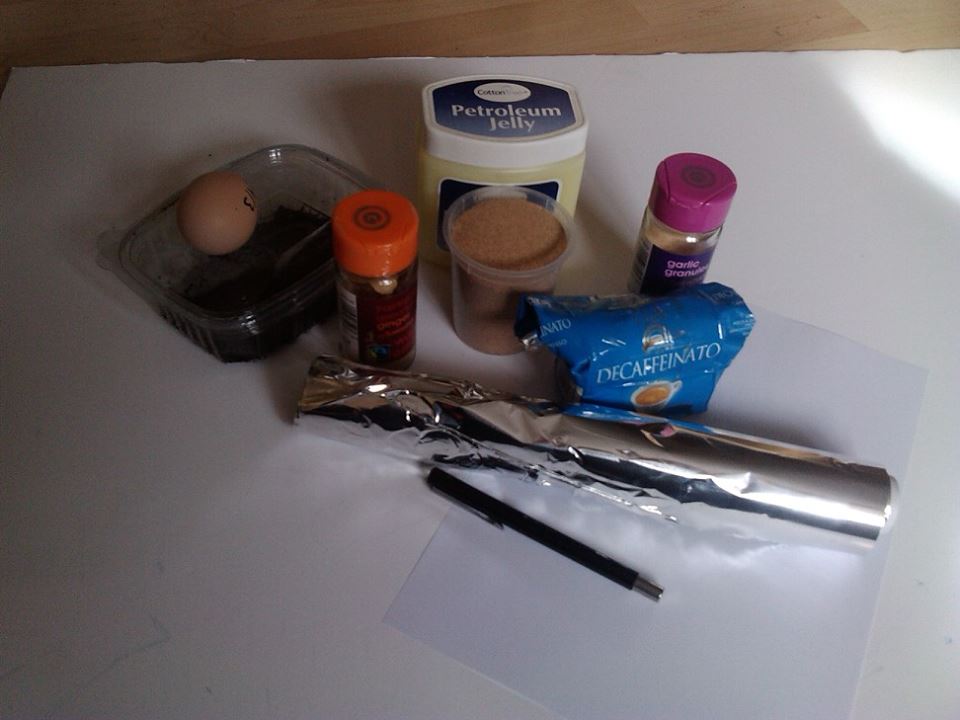To test the efficacy of natural snail repellents
Equipment
 You will need
You will need
1. A uniform, flat surface such as a plastic tray. We used a sheet of foamboard and covered it with acetate from a roll because that was what was to hand but you could use a plastic tub or the lid from a toy box or even laminate flooring or a smooth table top. (Watch out in case your snails go too near to the edges of tables.) Make sure that the area is clean and clear of debris.
2. Snails. You can look for these in moist areas of your garden or local park, especially after rainfall or you could buy some.
3. A plastic tub with a lid with some soil and vegetable matter in to keep your snails in.
4. A variety of supposed snail repelling items. We used crushed egg shells, ground coffee (dry and unused), ground garlic, sand, ground ginger, kitchen foil and petroleum jelly. Other suggested items are copper wire or strips, aluminium with cucumber, grit.
5. Something circular such as a lid from a jam jar.
6. Pen or pencil
7. Paper
8. Ruler (optional)
9. Clock or timing device
Method
1.Print out or make a chart for your
results. Here is the one you can print.
2. Make circles of equal size using each of the different test
items. We used a fairly large jam jar lid as a template and
sprinkled or smeared or poured circles of ground ginger, ground
coffee, crushed eggshells etc. around the edge of the lid. We used
petroleum jelly last of all, to prevent other materials sticking to
the lid. We also cut out a circle of kitchen foil. Make sure that
the centre of the circles are clean and free from spills and that
there are no breaks in the circles.
3. Leave space for a control, that is, a space with no physical barriers but on the same surface as the circular barriers.

4.Place your snails into the centre of the circles (one into each)and check the time or set the timer. You might decide in advance to have a maximum time limit for the experiment. We set a maximum of 3 minutes. If a snail did not move within that time, we removed it from the experiment. You can move snails from inside one barrier to another after the required time has elapsed. Once a snail has breached a barrier, you should remove it from the experiment until the allotted time has passed.
5. Make a note of whether the snails crossed the barrier. If they did cross it, note approximately how long they took to cross the barrier. You could also note whether or not they reared up, or retreated back into their shell, or performed any other defensive action such as foaming.